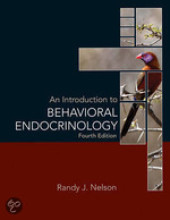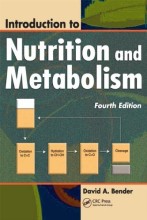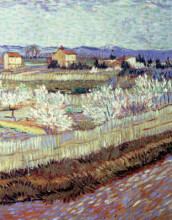Reproduction - Parental Behaviour
20 important questions on Reproduction - Parental Behaviour
Parental behavior: any behaviour that contributes directly to the survival of fertilized eggs or offspring that left the body of the female.
Parental behaviour involves gentle care giving and aggressive behaviour to protect the offspring.
Any behaviour related to the protection of one its offspring.
Categories of offspring development
altrical
precocial
Avian maternal behaviour: endocrine correlates of broodiness (fig 7.9)
Prolactin levels in the blood induces broodiness. The rise of prolactin happens after a peak of steroids, LH and FSH. Incubation is initiated by progesterone and the decrease in prolactin. Injecting progesterone of estradiol failed to return nestbuilding behaviour in birds without ovaria. Steroid stimulated this behaviour. But primarily the prolactin concentrations appear to influence the broody behaviour. Prolactin increase is initiated by courtship.
- Higher grades + faster learning
- Never study anything twice
- 100% sure, 100% understanding
Parental behaviour in does and pigeons in general and the endocrine correlates of maternal and paternal behaviour.
Parental behaviour in these animals seems to be mainly prolactin concentrations dependent.
Neuronal control of parental behaviour in birds: preoptic area (poa).
in males with a lesion in the poa, courtship decreased, but recovered in continues company of females, due to social stimulation. Behavior was removed when housed individual and females where introduced. A research about receptors and the difference in species are not much, but the species with a low parental behaviour shoed almost no receptors in the poa.
Thus, a difference in sensitivity to hormones, rather than the differences in blood concentrations of hormones.
Differences in parental care are mediated by differences in receptors, not hormones per se.
Maternal behaviour in mammals: marsupials, monotremes, eutherian mammals
marsupials
These young resemble more like embryos than offspring when born. They are harboured in a pouch of the mother where the mammalian gland is located aswell. When old enough, they come out and only return for nursery.
This pattern is baed on the need of the mother to remain mobile. Also the young is only caried, but not taken care of. If it is deattached, the mother will not help it.
Monotremes
are born as eggs (earlier than marsupials) and the mother will barry the young and its self to protect and nurse it
Eutherian placenta carriers
Mammalian paternal behaviour: incidence and examples of species.
Paternal behaviour should only be observed in species that have a high degree of mating exclusivity between males and females. Males only exhibit paternal behaviour when the young needs the support of the father to survive. Monogamy for example is exclusive behaviour between male and female of a certain species. marmosets for example. It only occurs 6% in rodents.
Endocrine correlates maternal behaviour: oestrogens, prolactin, placental lactogen, oxytocin, relaxin
Estrogen levels are high around the birth of the offspring. These are the most important, if not critical hormones for the onset of maternal behaviour. Also other hormones like oxytocin and relaxin have shown to have some importance in the onset of maternal behaviour.
Prolactin and placental lactogen are also important, but how they work is unknown.
Pup-induced paternal behaviour = concaveation = sensitication, a hormone independent process
Foster pups are used and when they are presented for a few hours to an adult nulliparious female, she will adopt them after 5 to 6 days and show maternal behaviour.
if the female has weaned pups before, the onset of maternity is much faster.
If given to a female, they initially attack the pups.
Components parental behaviour: motivation, performance
Test results show that the MPOA (medial preoptic area) is part of a circuit that mediates both sterotyped maternal behaviour and motivations to perform them, but they also suggest a dissociation of mechanisms mediating expression of the species-typical maternal behavior and those mediating motivation.
Another study indicates that the difference in motivational state can be observed even while performance of maternal behavior remains the same. The factors, endocrine or otherwise, that undelie this distinction remain unspecified.
Results from both tests are more or less the same. Motivation may of may not be endocrine related
Maternal behaviour (1): hormones essential for priming effect in first time mothers
The experienced mothers are the "better" mothers. Also when you look at hormonal levels. If you remove the influence of hormones in experienced mothers, they will still show maternal behaviour. Hormones seem to prime first-time mothers (primiparous mothers).
During the gestation, primiparous mothers need 7 to 8 days to show maternal behaviour to the pups, while multiparous females show maternal behaviour within one day.
These aspects of maternal behaviour are called "maternal memory".
What is a primiparous female? And Nulliparous?
Primiparous = first-time mother
Nulliparous = never given birth
Mutliparous = given birth more than 1 time
Maternal behaviour (2): development of maternal memory, role of nucleus accumbens
This maternal memory serves to reduce the latency of hormonal input. A lesion in the shell of the nucleus accumbens is the part of the brain where the circuitry mediates maternal memory. Lesions in the core did not affect maternal behaviour.
Hormone profiles during pregnancy and parturition, and induction of maternal behavior in rodents and primates (7.19)
In rats: after implantation of the blastocyst implantation, progesteron levels increases. and just before parturition it decreases.
Estradiol remains stable during pregnancy and rises just before parturition.
Prolactin is stable and high during the first half of the pregnancy and decreases second half. During and after parturition rises because of the lactation.
In humans: Prolaction increases gradually until parturition and stay elevated until the nursing is complete.
Progesterone and estradiol rise gradually during the pregnancy and drop during and after the parturition until zero.
Mesolimbic dopamine system and maternal behavior
Mesolimbic dopamine system and maternal behavior seems necessary for the appropriate maternal behaviour
Motivated behaviours, like maternal behavior, have generally a rewarding component that involves the dopamine system.
Hormone0induced basal dopamine suppression is related to elevated maternal responsivenes.
Maternal aggression prior to birth: role of progesterone
When progesterone is injected, the mice become more aggressice, and when blood concentrations during pseudopregnant mice rises, they also become more aggressive.
Maternal aggression after birth: Role of suckling by the young, serotonin, CRH, oxytocin
The role of sucklings at the nipples of the mother seems eccential for maternal behaviour. Since the removal of the nipples (thelectomized). Prolactin was suspected to be involved, but tests not's confirm this.
Steroids from the gestation indirectly induce aggressive behaviour of the mother. The hormones involved are serotonine, CRH and oxytoxine.
Three stages of maternal care and who initiates?
1. Building nest, delivers the young and retrieve the pups that wander away from the nest. "Nest phase", mainly initiated by the mother.
2. The mother initiates care, pups approach her for contact. From both sides
3. maternal rejcetion and separation initiated by the pups.
Primate maternal behavior: role of cortisol, progesterone and oestradiol, figure 7.30
Cortisol does not directly induce maternal behavior, but acts als quality factor for maternal care. When the cortisol is higher (like in first-time mothers) the protection, care and recognision of the young are superior to that of multiparous mothers.
The high P and E2 levels during the pregnancy result in a low attachment of the mothers and when the ration is low, there is a higher attachment of the mothers.
Endocrine correlates of paternal behaviour in mammals
testosterone, prolactin and cortisol are hormones related to paternal behaviour. Prolactin is elevated in fathers just prior parturition. Cortisol concentrations are linked with the establishment of a social bond between parent and infant. Testosterone levels are decreased postpartum.
The question on the page originate from the summary of the following study material:
- A unique study and practice tool
- Never study anything twice again
- Get the grades you hope for
- 100% sure, 100% understanding































